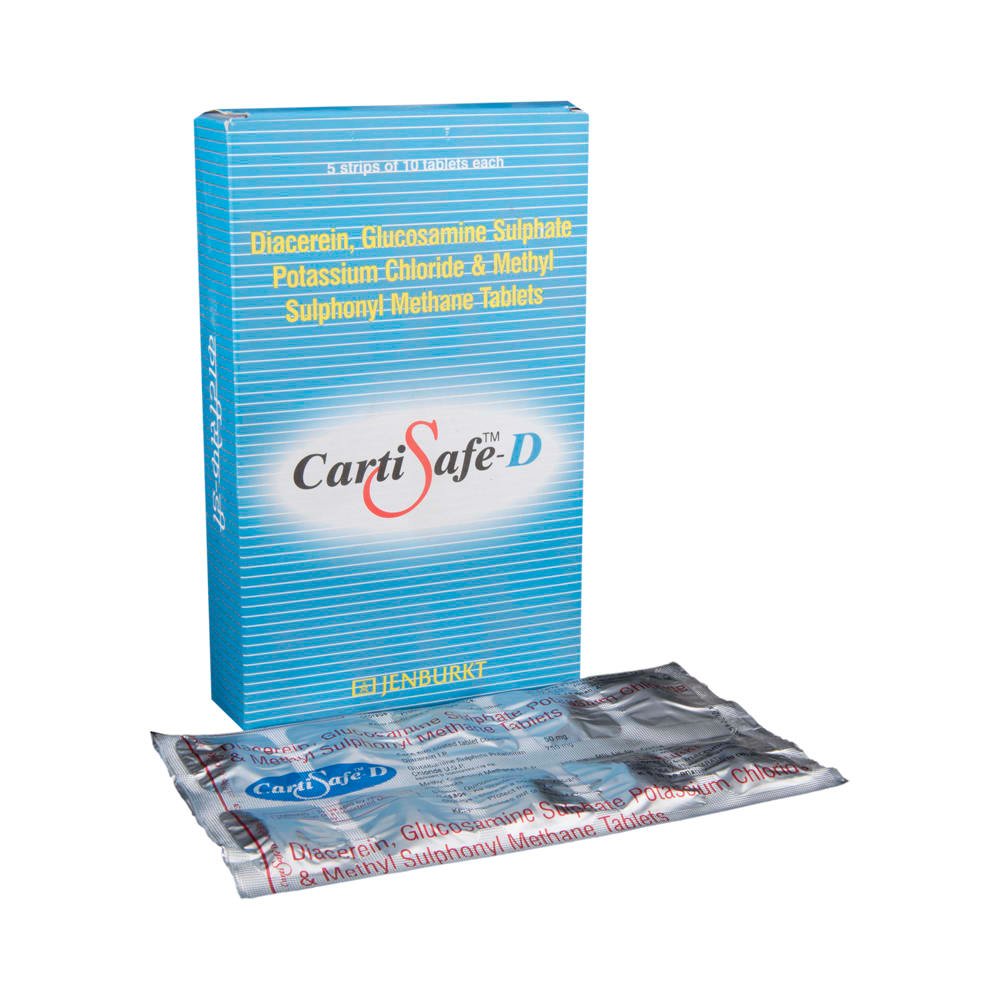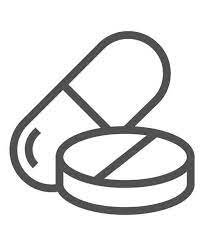About CARTISAFE D TABLET
CARTISAFE D TABLET belongs to the group of medicines called anti-inflammatory agents. CARTISAFE D TABLET is used to treat and relieve symptoms of osteoarthritis. Osteoarthritis is a degenerative joint disease in which the two ends of the joints come together due to the breakdown of a protective covering of cartilage
CARTISAFE D TABLET is a combination of three drugs: Glucosamine (anti-inflammatory & anti-rheumatoid agents), methyl sulfonyl methane (nutritional supplement) and diacerein (anti-inflammatory). CARTISAFE D TABLET works by helping in the build-up of cartilage. Cartilage is the connective tissue located on the bones near the joints. This build-up of cartilage helps in joint repair.
Take CARTISAFE D TABLET with or without food. Take CARTISAFE D TABLET at the same time every day for best results. Swallow CARTISAFE D TABLET as a whole with a glass of water; do not chew, break, or crush the tablet. You are advised to take CARTISAFE D TABLET for as long as your doctor has prescribed it for you depending on your medical condition. In some cases, you may experience certain common side-effects such as headache, diarrhoea, nausea, vomiting, wind, indigestion, abdominal pain, and constipation. Most of these side-effects do not require medical attention and will resolve gradually over time. However, you are advised to talk to your doctor if you experience these side-effects persistently.
To treat your condition effectually, continue taking CARTISAFE D TABLET for as long as your doctor has prescribed. To avoid recurring symptoms, do not stop it midway. Do not take CARTISAFE D TABLET if you are pregnant or breastfeeding unless prescribed. CARTISAFE D TABLET causes drowsiness and dizziness, so drive with caution. CARTISAFE D TABLET should not be given to children as safety and efficacy have not been established. Avoid consuming alcohol along with CARTISAFE D TABLET as it could lead to increased drowsiness and dizziness. Keep your doctor informed about your health condition and medicines to rule out any side-effects.
Uses of CARTISAFE D TABLET
Osteoarthritis
Directions for Use
Storage
Store in a cool and dry place away from sunlight
Side Effects of CARTISAFE D TABLET
Like all medicines, CARTISAFE D TABLET can also cause side-effects, although not everybody experiences them. Headache, diarrhoea, nausea, vomiting, wind, indigestion, abdominal pain, and constipation are the common side-effects of CARTISAFE D TABLET. Please consult your doctor if you experience any of these side-effects persistently.
In-Depth Precautions and Warning
Drug Warning
Do not take CARTISAFE D TABLET if you are allergic to any of its contents. Inform your doctor before taking CARTISAFE D TABLET if you have or had heart problems, high cholesterol, diabetes, asthma, intestinal perforations, inflammatory bowel disease, liver and kidney problems. Do not take CARTISAFE D TABLET if you are pregnant or breastfeeding unless prescribed. CARTISAFE D TABLET causes drowsiness and dizziness, so drive only if you are alert. CARTISAFE D TABLET should not be given to children as safety have not been established. Avoid consuming alcohol along with CARTISAFE D TABLET as it could lead to increased drowsiness. Stop taking CARTISAFE D TABLET and consult your doctor immediately if you have stomach pain or any signs of bleeding in the intestine or stomach such as blood in stools. Do not take any other NSAID’s for pain relief along with CARTISAFE D TABLET unless prescribed. Keep your doctor informed about your health condition and medicines to rule out any side-effects.











Reviews
There are no reviews yet.